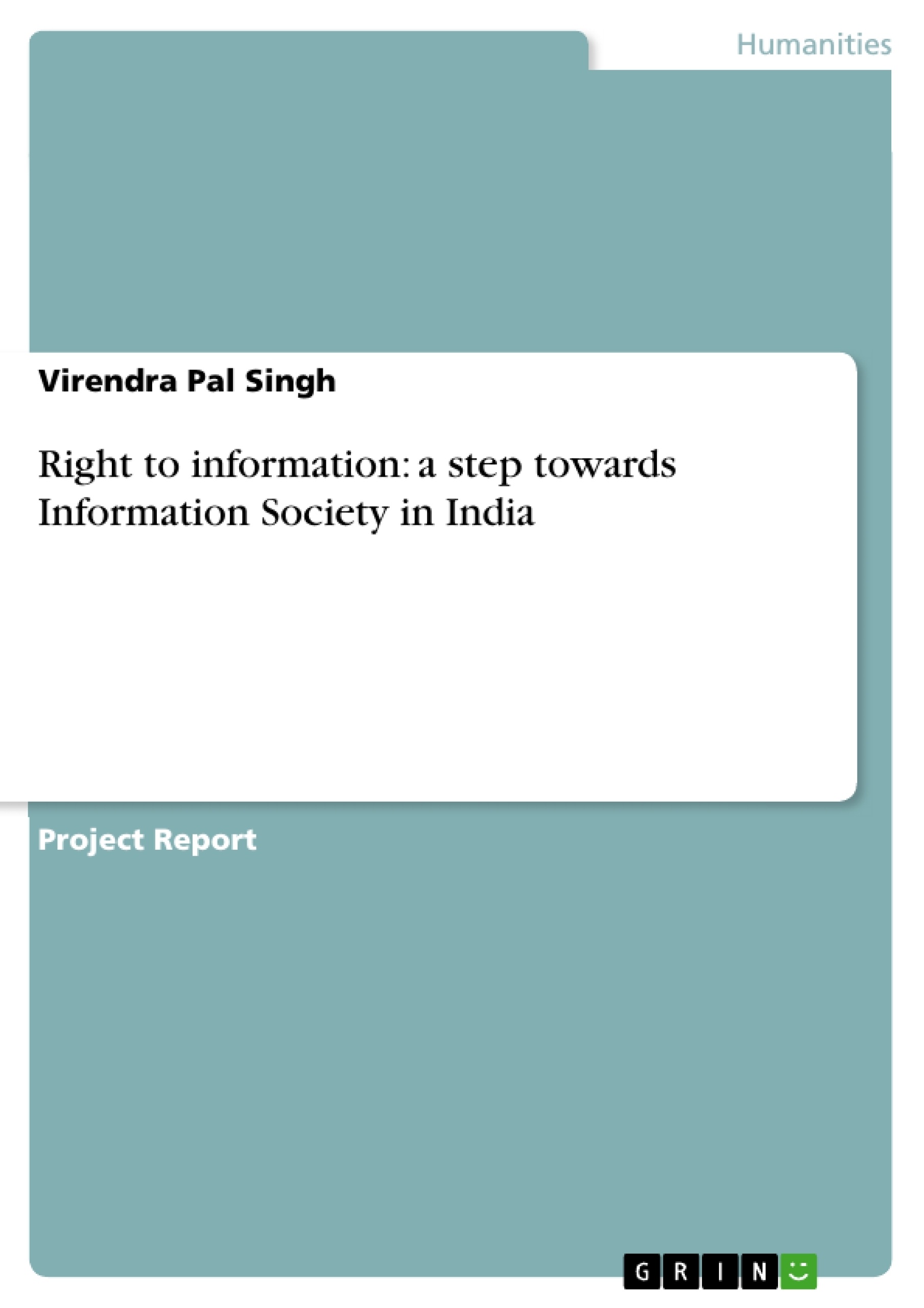In a broad sense the content (messages) of all meaningful communication is information. More narrowly (but still loosely), information refers to verifiable and thus reliable factual data about the ‘real world’. This includes opinions as well as reports about the facts of the world. Even more narrowly and precisely, information may be equated with communicated ‘data’ that do (or can) enable discriminations to be made in some domain of reality and thus ‘reduce uncertainty’ for the receiver (Mc Quail 2000:497). The flow and nature of information varies with the form of society. In a primitive society the information is shared equally with the members of the society by informal ways of communication. The flow of information is very smooth and the information is transmitted through interpersonal communication i.e. through the ‘word of mouth’. There are no specialized institutions and communicators in the process of communication. With the development of society, the nature of communication also undergoes through the process of change and gradually society becomes more differentiated and the specialized institutions perform different functions of society. The form of communication is also changed as it is now mediated through some sort of technology for the group of the people through some technical devices. The access of the people to these devices varies to different sections of the society and thus smoothness in the flow of information is disrupted to a great extent. In modern society, first developed in Europe and then spread over to the rest of the world in the form of nation states, the nature and flow of information is relatively smooth as the traditional and modern mass media are well integrated (Pye 1963). In transitional communication system, however, the flow of information is disrupted due to lack of integration among the traditional and modern media of mass communication. The unequal distribution of the information poses different kind of problems in this type of society. In modern society, modern mass media also change with the pace and level of development and gradually new forms and institutions of communication
emerge on the scenario.
Inhaltsverzeichnis (Table of Contents)
- Information and its Forms
- Globalization and the Information Society
- Theories of Social Change
- The Information Society
- The Right to Information Act in India
Zielsetzung und Themenschwerpunkte (Objectives and Key Themes)
This paper examines the significance of the Right to Information Act in India, arguing that it marks a crucial step towards the development of an information society within the country. The paper explores the evolving nature of information in various societies, the impact of globalization on communication and societal structures, and the emergence of the information society as a dominant social model. It also examines the role of new communication technologies, particularly the internet, in shaping global governance and promoting transparency.
- The evolution of information in different societies
- The impact of globalization on communication and societal structures
- The emergence of the information society as a dominant social model
- The role of new communication technologies in shaping global governance
- The significance of the Right to Information Act in India as a step towards an information society
Zusammenfassung der Kapitel (Chapter Summaries)
The paper begins by defining information and outlining its various forms across different societies. It highlights the role of information in reducing uncertainty for receivers and discusses how the flow and nature of information vary with societal development.
The next section delves into the impact of globalization on societies, examining the interconnectedness of technological, economic, governance, and communication changes. The paper emphasizes how these changes lead to a global system, transforming social structures at all levels.
The paper then presents three theoretical constructs used to conceptualize the changes in societies, particularly in the West. It explores the concept of a postmodern society, characterized by consumerism and the central role of mass media, and contrasts it with the notion of the information society, characterized by information technologies and the spread of information networks.
The paper then highlights the perspectives of scholars such as Schillar, Habermas, and Giddens on the salient features of the information domain, emphasizing the importance of information for democratic debate and the state's influence on information collection and dissemination.
The concluding section focuses on the role of new communication technologies, particularly the internet, in transforming the globalizing world. It argues that the increasing transparency in governance demands a free flow of information, which the Right to Information Act aims to facilitate in India.
Schlüsselwörter (Keywords)
The paper focuses on the evolution of information in different societies, the impact of globalization on communication and societal structures, the emergence of the information society, the role of new communication technologies in shaping global governance, and the significance of the Right to Information Act in India as a step towards an information society. Key terms include information, society, communication, globalization, information society, technology, governance, and transparency.
- Quote paper
- Dr. Virendra Pal Singh (Author), 2008, Right to information: a step towards Information Society in India, Munich, GRIN Verlag, https://www.grin.com/document/114630



